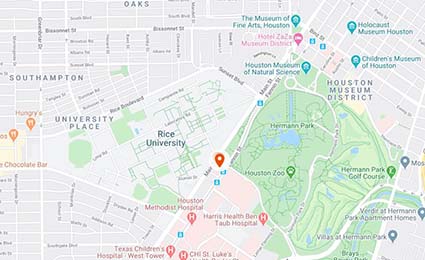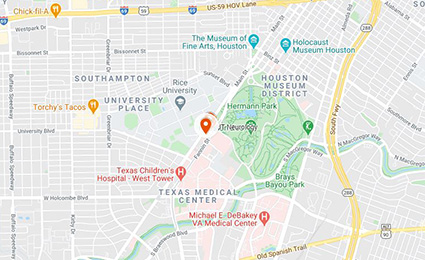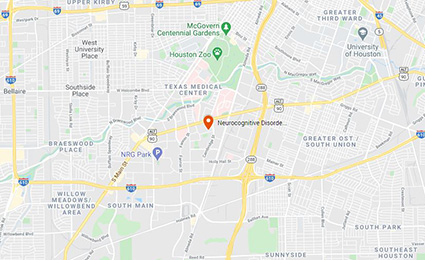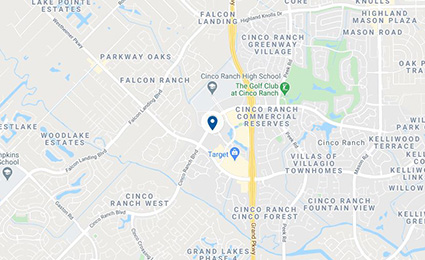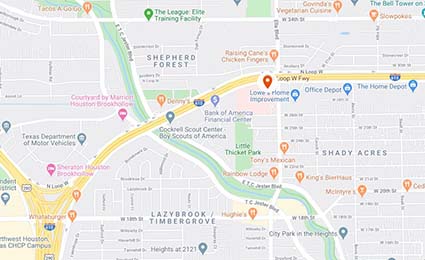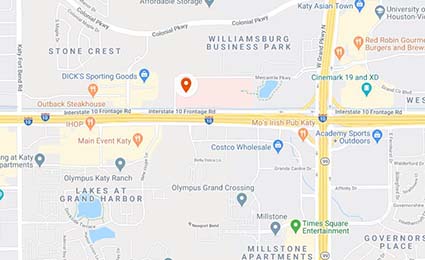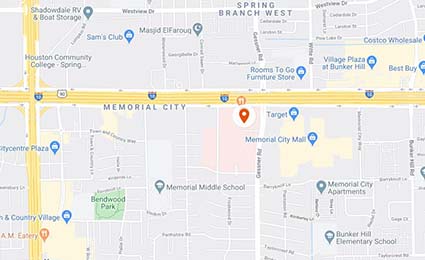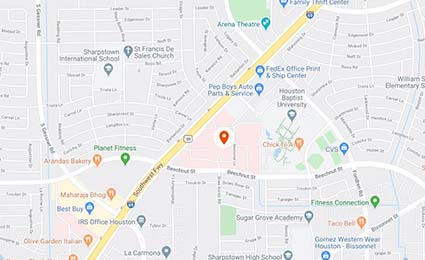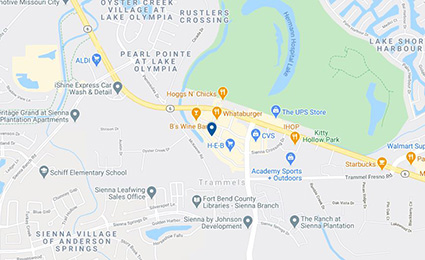Brain Aneurysm
What is a Brain Aneurysm?
A brain aneurysm, or a cerebral aneurysm, occurs when a weak spot on a blood vessel in the brain bulges. The bulge can put pressure on nerves and brain tissue. In some cases, the bulge can burst, or hemorrhage, which causes bleeding in the brain. They frequently occur in the artery in the front of the brain that supplies oxygen-rich blood. A ruptured brain aneurysm is considered life-threatening and can result in a stroke, brain damage, or even death. Most brain aneurysms never rupture and do not cause symptoms. Estimates indicate that about 3 to 5 percent of Americans may develop a brain aneurysm in their lifetimes. About 30,000 brain aneurysms a year rupture.
While a diagnosis of a brain aneurysms might feel overwhelming, UTHealth Houston Neurosciences has recognized experts in this condition who will guide you through every step of treatment. Our medical team takes great pride in its high success rates and will prioritize your care.
Learn about cerebral aneurysms from UTHealth Houston neurosurgeon Spiros Blackburn, MD.
Causes of Brain Aneurysms
People can be born with a weak spot in an artery in their brains. Over time, the pounding of blood in the weak spot can expand into a sac that measures at least 50 percent of the blood vessel’s normal diameter. Researchers have identified genetic factors to help identify people at greatest risk of developing aneurysms. Patients with family members who have suffered aneurysms are at a higher risk, according to some studies.
High-blood pressure, hardening of the arteries, drug use, and cigarette smoking are considered risk factors for brain aneurysms. Injury and infection also increase risk. Brain aneurysms are more common in older adults and females.
Early Signs of a Brain Aneurysm
Small aneurysms are unlikely to cause symptoms. As an aneurysm expands, patients might experience pain above and behind an eye, a dilated pupil, vision changes or numbness on one side of their face. Aneurysms that are more than 10 millimeters have an increased risk of rupture.
A sudden, severe headache is the main symptom of a ruptured aneurysm. Other symptoms might include nausea, vomiting, loss of consciousness, facial pain, weakness, paralysis, and seizure. Drooping eyelids, confusion and visual irregularities, such as double or blurred vision, might also be noticed.
Every effort is made to diagnose and treat brain aneurysms before they bleed. A hemorrhage, or bleeding from a ruptured aneurysm, is a medical emergency that requires immediate medical attention.
Diagnosing a Brain Aneurysm
Brain aneurysms are often discovered after rupture or during diagnostic exams, including CT scans and MRIs, requested for other medical conditions. UTHealth Houston Neurosciences uses advanced imaging tools to map the structure of the brain. Your neurological team may conduct an angiogram, where a doctor will inject dye into a blood vessel and take X-rays to identify aneurysms.
Treatment
Treatment options vary based on several factors, including the size and location of the aneurysm. The goal will be to decrease the risk of hemorrhage or repeated bleeding.
Not all cerebral aneurysms require treatment. Your UTHealth Houston Neurosciences medical team may decide to closely monitor a small aneurysm that does not present symptoms. Both unruptured and unruptured aneurysms might necessitate surgical treatment to clip or fill the abnormality.
Cutting-edge imaging technology can be used to map the aneurysm. Highly skilled doctors can then determine an approach that might include resection, clot retrieval, angioplasty, stenting, embolization, or radiosurgery.
With microvascular clipping, a surgeon will place a small piece of metal on the aneurysm to stop its blood supply. Using a less-invasive procedure, called coil embolization, a surgeon can insert a catheter into an artery in the groin and release coils, glue or mesh that will block the aneurysm, reducing the flow of blood to it.
Surviving a ruptured brain aneurysm: Esteban Delafuente
What You Can Expect at UTHealth Houston Neurosciences
At UTHealth Houston Neurosciences, a team of cerebrovascular specialists will work together to determine the best treatment plan for each patient. With highly regarded specialists in each area, the goal of this approach is to help save our patients time and money. Most importantly, the collaboration can lead to better treatment plans and outcomes. When surgery is necessary, our neurosurgeons routinely use innovative minimally invasive techniques.
Throughout the treatment process, our team works closely with the doctor who referred you to ensure a smooth transition back to your regular care plan. While you are with us, you can expect top-notch care, excellent communication, and genuine compassion.
FAQ: Answers to common questions about cerebral aneurysm
What is a Brain Aneurysm?
A brain aneurysm (or cerebral aneurysm) is a bulge that develops on a weakened artery wall in the brain. It fills with blood and can grow over time. Cerebral aneurysms often do not cause symptoms and are detected during testing for other conditions. It is uncommon for an aneurysm to rupture or bleed, but if it does, it can be a medical emergency. About 30,000 Americans a year suffer ruptured aneurysms. When that occurs, a patient may experience a sudden, severe headache, as well as nausea, vomiting, and blurred vision.
An aneurysm that is large but hasn’t ruptured may put pressure on tissue or nerves, causing pain, numbness, weakness, or vision changes.
An aneurysm typically forms at the bifurcation, or split, as an artery branches off. The most common type is a saccular aneurysm, which is a round sac attached to a main artery or one of its branches often along the base of the skull.
An aneurysm sounds scary. Is it an emergency?
Most brain aneurysms have a relatively low risk of bleeding and some don’t require treatment at all. Still, you should be seen by a cerebrovascular neurosurgeon after your diagnosis. If, after you have been diagnosed with an aneurysm you experience a severe headache, seek emergency medical care immediately. A bleed can lead to brain injury and even death.
What is the risk of my aneurysm bleeding?
The risk of an aneurysm bleeding predominantly depends on two main factors – the size and location. The shape and wall thickness also contribute to the chance of rupture. Depending on these factors, we can give you an estimate of the risk of bleeding. Whether the patient is a smoker or suffers hypertension also can impact the risk.
What is the treatment for brain aneurysms?
Some aneurysms with an extremely low risk of bleeding may not need treatment at all. You will be monitored to make sure the aneurysm doesn’t grow. Surgery has long been the primary form of aneurysm treatment and requires a cerebrovascular surgeon to place a clip on the aneurysm.
The other treatment is endovascular. Technology has improved over the last 20 years to allow devices to navigate through the blood vessels to treat aneurysms. Physicians trained in Endovascular Neurological Surgery can treat aneurysms through the artery in the leg.
What does surgery for a brain aneurysm involve?
Surgery for brain aneurysms requires an incision on the scalp that allows us to go around the brain since the blood vessels that have aneurysms lie on the surface. Once we locate the aneurysm, we can place a clip so that no blood goes in the aneurysm. This treatment is typically durable and effective.
How is an endovascular procedure different?
It does not require an incision on the scalp or brain. The access is through the femoral artery in the groin. Through this artery, surgeons can go up to the brain using small catheters and treat the aneurysm in the blood vessel.
The most common endovascular treatment is coil embolization. The sack of the aneurysm is filled with small metal coils that prevent blood from circulating in the aneurysm.
Before aneurysm coiling, an aneurysm can be seen at the branch point, called an anterior communicating artery aneurysm.
After coiling, the aneurysm doesn’t fill with blood anymore. If you look closely, you can see coils in the aneurysm sack where the aneurysm previously filled. This case was a complex aneurysm and required a stent combined with coils.
What about other endovascular treatments like flow diversion and intrasaccular devices?
The technology for treatment of brain aneurysms continues to advance and these newer devices are approved for aneurysm treatment. The best treatment for your aneurysm depends on its location and anatomy, and all options will be considered.
Cerebrovascular and Stroke Care
- Arteriovenous Malformation (AVM)
- Brain Aneurysm
- Moyamoya Disease
- Stroke
- Subarachnoid Hemorrhage
- Transient Ischemic Attack (TIA)
Contact Us
At UTHealth Houston Neurosciences, we offer patients access to specialized neurological care at clinics across the greater Houston area. To ask us a question, schedule an appointment, or learn more about us, please call (713) 486-8000, or click below to send us a message. In the event of an emergency, call 911 or go to the nearest Emergency Room.
